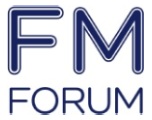In the past FM software was perhaps seen as a back-office tool, primarily used by managers to plan maintenance schedules, track assets, and generate compliance reports. But as estates become smarter and the workforce more mobile, the real opportunity lies in putting technology directly into the hands of frontline teams. In 2025/26, mobile-first FM solutions, from apps and digital checklists to IoT-enabled monitoring, are reshaping how facilities are managed day-to-day…
Why Mobile Matters
Facilities professionals rarely sit behind a desk. Engineers, caretakers, and cleaning staff are constantly moving between sites, equipment, and service requests. By equipping them with mobile apps, organisations can streamline communication, reduce paperwork, and capture data at the point of action.
Tasks such as logging a repair, completing a compliance checklist, or scanning a QR code to pull up asset history can all be handled in real time. This eliminates the lag of manual reporting and ensures managers have a live view of what’s happening across the estate.
Digital Checklists and Workflows
Paper-based inspection sheets are being rapidly phased out in favour of digital checklists, which guide staff through step-by-step processes and automatically flag anomalies. Whether it’s a fire safety check, a legionella inspection, or a daily cleaning routine, mobile tools ensure consistency and accountability.
Completed checklists are stored instantly in the system, providing an auditable record for compliance and easing the burden of preparing for CQC, HSE, or internal audits.
IoT Integration on the Ground
Mobile solutions are becoming even more powerful when combined with IoT-enabled sensors. For example, an engineer might receive an alert that a boiler is running outside normal parameters, with sensor data accessible directly through their mobile device.
This predictive maintenance model enables faster response, reduces downtime, and helps avoid costly failures. For cleaning teams, occupancy sensors linked to mobile apps can trigger dynamic cleaning schedules, ensuring resources are deployed where they’re most needed.
Boosting Engagement and Efficiency
Mobile-first platforms don’t just improve efficiency, they also enhance workforce engagement. Staff feel empowered when they have the right tools to do their jobs well, and real-time communication reduces frustration caused by delays or unclear instructions.
For managers, the ability to see job status, location updates, and digital audit trails improves oversight and resource planning, reducing costs and boosting service quality.
Looking Ahead
For 2026, the facilities function is moving beyond centralised planning towards distributed, data-driven operations. By embracing mobile-first solutions, FM leaders can empower their teams, improve compliance, and respond dynamically to the needs of modern estates.
For organisations juggling shrinking budgets, rising expectations, and complex estates, mobile-first FM is becoming the default operating model.
5 Features to Look For in a Mobile FM Solution
- Offline Access
Ensure staff can complete tasks and capture data even in areas with no connectivity, with automatic syncing once back online. - QR/Barcode Asset Scanning
Enable quick access to asset histories, maintenance logs, and manuals by scanning codes directly from a mobile device. - IoT Integration & Alerts
Connect with building sensors to provide real-time data on equipment performance, occupancy, or environmental conditions, triggering instant tasks for engineers. - Compliance Workflows
Digital checklists and automated reporting aligned to standards (CQC, HSE, ISO) help ensure consistency and reduce audit preparation time. - Analytics Dashboards
Mobile access to performance data, KPIs, and work order status allows managers to make informed decisions on the go. - Pro Tip: Prioritise platforms with intuitive interfaces: the easier the app is to use, the more likely frontline teams will adopt it consistently.
Are you searching for FM Software solutions for your organisation? The FM Forum can help!
Photo by Jonathan Kemper on Unsplash







